Browse Primary Sources
Locate primary sources, including images, objects, media, and texts. Annotations by scholars contextualize sources.
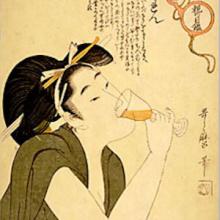
Vulgarly Called the Wanton
This print is called Vulgarly called the Wanton and was created by the artist Utamaro in 1802. It portrays a woman engaged in frivolous or indulgent behavior, providing a sense of how people understood urban Japan during the Tokugawa period. Analyzing these rich images offers an important window into an increasingly complex urban world.
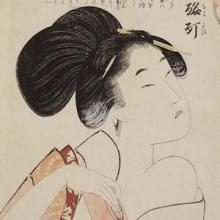
The Drunkard
This print, titled, The Drunkard, portrays a woman engaged in frivolous or indulgent behavior. It is a ukiyo-e woodblock prints from the Tokugawa or Edo period in Japan (1600 to 1867) created by the artist Utamaro in 1802.
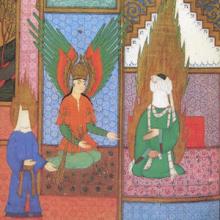
The Prophet Muhammad and A’isha
This is a depiction of A’isha, one of Muhammad’s wives. She was close to the Prophet and is the author of roughly 1,200 Hadith. Her involvement tells us something about the public role that some women played in the early Muslim community and the respect she was given.

Excerpts from the Hadith by A’isha
Hadith are reports about what the Prophet Muhammad said or thought. They provide Muslims with a sense of how Muhammad applied the guidelines of the Koran to daily life. They are based on the memories and stories of those who knew the Prophet and were recorded a few generations after his death.
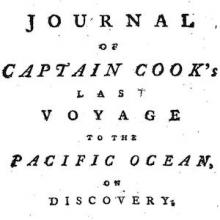
Excerpt from Ledyard's Journal
This is an excerpt from John Ledyard’s journal of his travels along the North American coast in the late 18th century. Ledyard, born a British subject, became an American citizen after Independence. He traveled with the British explorer Captain Cook to Alaska, Siberia, and the Pacific Islands.
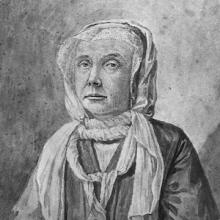
Excerpt from Memoirs by Catharina Schrader
This is a memoir written by a Protestant midwife, Catharina Schrader, who lived in Germany during the 1600s. It offers an important window into the daily lives and life cycles of non-elite women living in early modern Europe.
This source is a part of the Analyzing Personal Accounts methods module.

Excerpt from Memoirs by Glikl
The is a diary written by a Jewish merchant, Glikl of Hameln, a woman living in northern Germany in the 17th century.
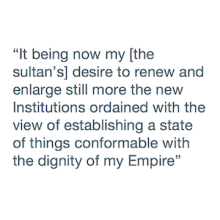
An Ottoman “Bill of Rights”
This is an excerpt from an official proclamations by the government of the Ottoman Empire. It reflects an understanding by the ruling elites that some administrative reform was absolutely necessary to protect the state from further decay.
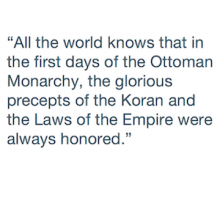
Gulhane Proclamation
This is an excerpt from an official proclamation by the government of the Ottoman Empire. The text is part of the Ottoman government’s response to internal and external demands for reform stemming from the growing weakness of the state.

People Reading the Gazette
This is an image of the reading public in 18th century France. This image can tell us about who read newspapers, how they read them, and how easy or difficult it was to access newspapers.
This source is a part of the Analyzing Newspapers methods module.
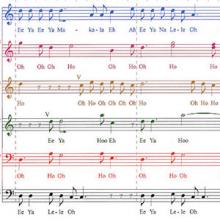
Mabo Song
This is a written representation of the music from the dance mabo, BaAka music is complex. It is polyphonic (many voices) and polyrhythmic (many rhythms). During a dance, participants engage in structured improvisation, knowing when and how to add or change a phrase or a beat and doing so in relation to others. The social and the aesthetic work together.
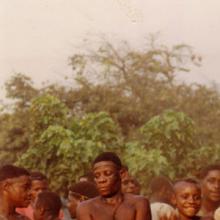
BaAka Women Dancing the Hunting Dance, Ndambo
This is an image of female BaAka dancers from the southwestern Central African Republic in the rainforest region dancing a hunting dance called Ndambo. Music and dance are important in BaAka culture. They can be performed for many reasons—sometimes in preparation for a hunt, other times to display skill.
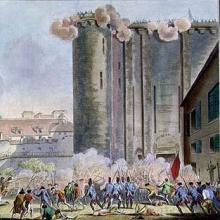
Taking of the Bastille
This color print emphasizes the populace’s participation in the storming of the Bastille, showing the urban population fighting under a red banner with muskets, swords, and pikes against the royal soldiers.

Taking of Weapons at the Invalides
From the City Hall, the crowd that had gathered on the morning of 14 July crossed the Seine River and sacked the royal veterans’ hospital known as the Invalides, where it hoped to capture arms. In Berthault’s engraving, the scene appears chaotic. The guards seem unsure how to react to the surging, leaderless, yet determined crowd.
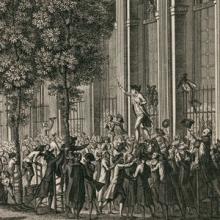
Speech in the Garden of the Palais-Royal
In this artistic rendition, on 12 July 1789 Camille Desmoulins stands on a table and encourages his listeners to rise against the threat to the Estates–General. He, and others of his ilk, would be successful in bringing about the fall of the Bastille on 14 July.
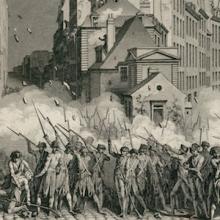
Fusillade in the Faubourg St. Antoine, 28 April 1789
This image chronicles a riot. Many believe it was caused by artisans who attacked the Reveillon wallpaper shop and factory because they believed that the owner was about to lower wages. Over two days, more than 6,000 attacked the place. On 28 April troops were called and fired on the crowd. The official report noted 71 killed, wounded, or detained.
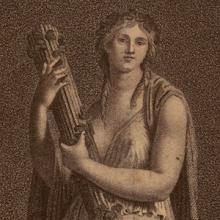
Fraternity
Using a woman to represent "Fraternity" seems ironic at best, although theoretically the term might mean the community of humanity. In actuality, when the revolutionaries considered "community," they certainly thought of men far more than women. The period saw women take advantage of opportunities presented to them, but outright champions of this kind of inclusive community were few.
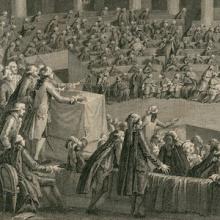
National Assembly Relinquishes All Privileges
This image, part of a series produced to show the most important events of the Revolution, focuses on 4 and 5 August 1789, when the system of privileges came to an end. This legal structure, characteristic of the old regime, guaranteed different rights for different people.

Transportation of Voltaire to the French Panthéon, 8 July 1792
Although Voltaire’s contribution to the Revolution has been much debated, the revolutionaries themselves had absolutely no doubt of his significance. After 1789 he was much in vogue, in that his plays were often performed and other artists lionized him in various ways.

Arrest of Louis Capet at Varennes, June 22, 1791
This print shows an angry crowd of fervent revolutionaries breaking down doors to arrest the King.